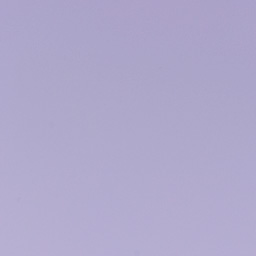Chroma lilac acrylic
The color can vary a bit from batch to batch.
Facts
Technical description: Polymethylmethacrylat (PMMA). Color code 8272
Weight: 1,19 g/cm3
Tolerance, thickness: +/- 15%
| Thickness | A4 | A2 | A1 |
|---|---|---|---|
| 3 mm | € 9 | € 33 | € 59 |
All sizes are in cm. All prices are inclusive of 25% VAT
| Thickness | 2000×1200 |
|---|---|
| 3 mm | € 269 |
All sizes are in cm. All prices are inclusive of 25% VAT
Nice to know
As a standard, our acrylic sheets have a protective film on both sides to help prevent burn marks. If the sheet is only to be laser cut, we leave the film on. If the sheet is to be raster engraved, the film is removed from the side that is to be engraved.
The matte side of the sheet is the front. If you would like your order to be cut with the back/shiny side upwards, please, let us know by leaving a comment when you place your order. Please, be aware that since the shiny side is the back, there might be some smaller imperfections.
The sheets are made in 3mm and in the following colors: powder (8269), baby pink/blush (8270), purple/lilac (8272), rosa/dark pink (8273), greeb (8276) and blue (8277).
Vector and raster engraving
Raster engraving of acrylic produces a matte, white surface, as the laser etches very dense lines in the material. A thin line of about 0.2 mm is drawn when vector engraving.
Laser cutting
Top – No burn marks. In general, a protective film is applied that should be removed after you have received your cutting. Has a clean, sharp appearance. When raster engraving, the film should be removed before cutting. The cutting process will create a matt, white deposition of smoke close to the cutting edge.
Edges – No burn marks. Have a sharp appearance and are in the same colour as the actual material.
Bottom – No burn marks. Has a clean, sharp appearance. In general, a protective film is applied that should be removed after you have received your cutting.
Finishing treatments
When heated, acrylic can be bent for products such as hinges. You will get the best results by using a bendable template (can be made in i.e. MDF) and a hair dryer or other means of heating up the material first.
You can write on acrylic with whiteboard markers and magic markers.
Acrylic can be cleaned with soap and water.
Contact adhesive or epoxy can be used if the material is to be assembled with the same or other materials.
Do not use glue or cleaners containing alcohol or solvent.




